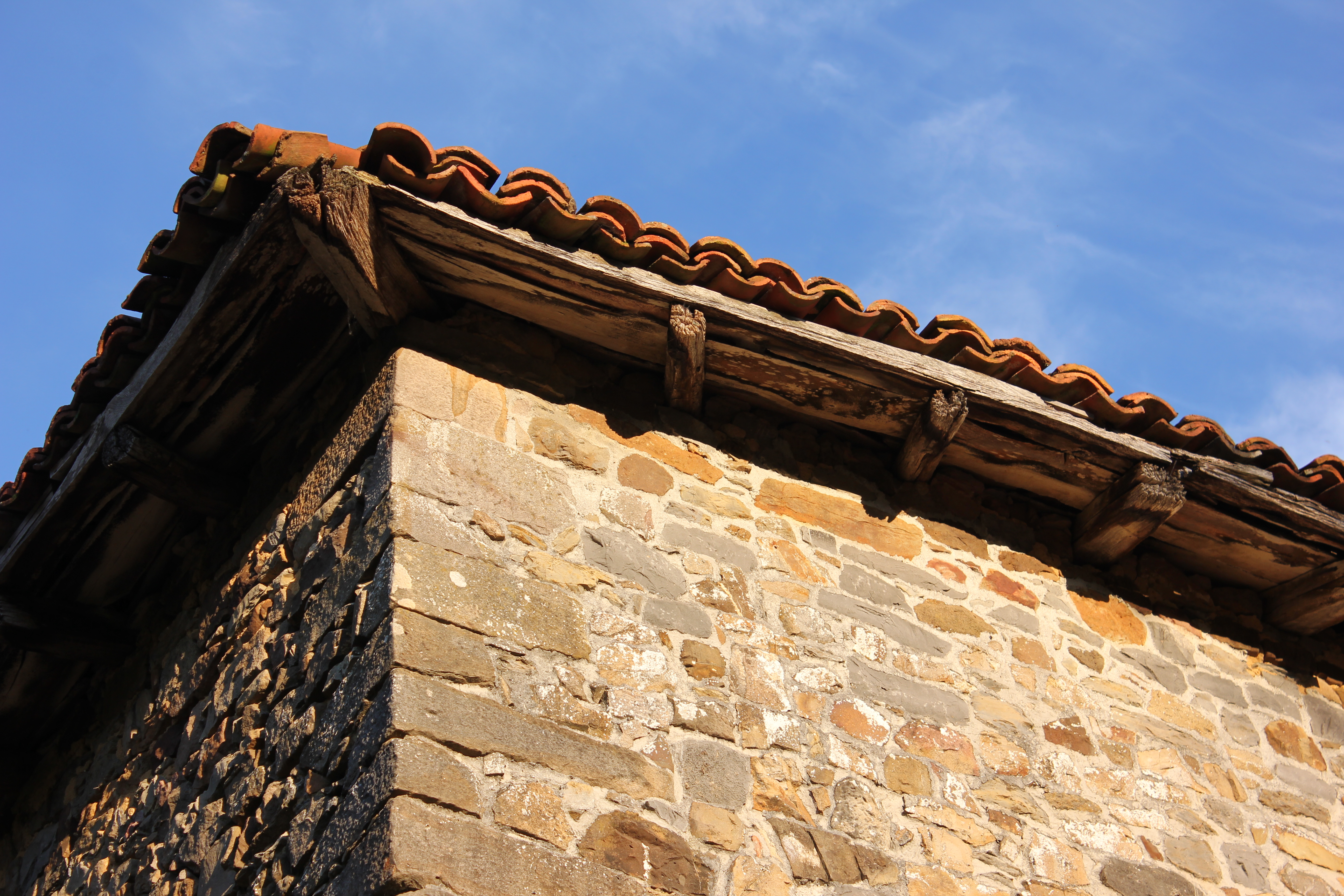Basque ethnography at a glance
![Red roof tiling. Photograph by Xabi Otero taken from Euskaldunak [The Basques], 4](https://www.labayru.eus/wp-content/uploads/2019/01/teilla-gorria_euskaldunak.jpg)
Red roof tiling. Xabi Otero. Euskaldunak [The Basques], 4.
Beyond its practical function, the roof tile (teila) is charged with symbolism in Basque folklore and ethnography, representing primarily the house (etxea), understood in a wider sense than merely a building.
The roof tile represented likewise private property as opposed to communal property. Thus, the roofs of shepherds’ huts and livestock housing built on communal land could not be tiled, since the tile was reserved for immovables.
As a protective environment for its occupants, the house is represented by the roof tile in a number of cases.
Until the end of the 19th century the custom of burying newborn children who died unbaptized under the eaves of the house or in land right next to it was widespread. The infant’s body was covered for protection with two roof tiles symbolizing the house.

Under the sheltering eaves. Luis Manuel Peña. Labayru Fundazioa Photographic Archive.
According to Christian tradition, women remained in quarantine for forty days following childbirth before they were allowed to leave the house. After recovery from delivery, the new mother went to be churched, her head covered with a tile from the roof. Should she need to leave the house during postnatal confinement, she ought to cover her head with a roof tile.
It was also customary in some localities to help a soul in transit find its way to heaven by dislodging a tile from the roof or by opening a window there where the body of the recently deceased lied. The removed tiles were on occasion placed in the shape of a cross.
Sometimes the tile became relevant for inheritance proceedings. The Charter of Bizkaia, for instance, allowed the testator to freely choose a successor and disinherit other beneficiaries using the formula: “Aparto con un palmo de tierra, una teja y un real de vellón” (I leave you nothing but a handspan of land, a roof tile and a billon real).
The roof tile played a major role in the delimitation and demarcation of boundaries. Stones in the ground marked the boundaries of the land attached to the house, and it was common to place one or more pieces of tile under the stones so that their presence or absence would settle any dispute in connection with the authenticity of a boundary marker.
Real property reached all the way to the farthest tile from the roof. By the same token, every year on the feast of the Magdalene (22 July), the mayor of the coastal city of Bermeo (Bizkaia) claims ownership of the Isle of Izaro throwing a roof tile into the sea while declaring: “Honaino heltzen dira Bermeoko itoginak!” (Roof water from Bermeo reaches this far!). It is a grand festive day in which Bermeo asserts its rights over the island, the tile being once again used as a symbol.
All of the above are ethnographic instances to illustrate the use of the roof tile to symbolize the house, its grounds and, by extension, private property.
Daniel Rementeria – Lorra Kultur Elkartea
Translated by Jaione Bilbao – Ethnography Department – Labayru Fundazioa
References for further information: Rites from Birth to Marriage, House and Family and Agriculture, all three part of the Ethnographic Atlas of the Basque Country collection.

